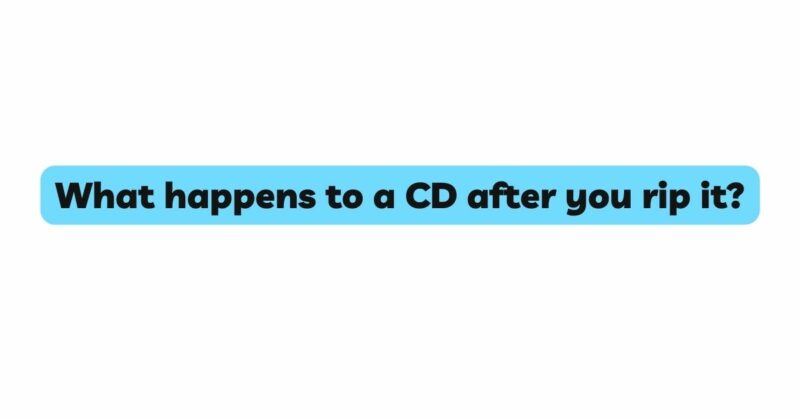In the realm of modern music consumption, the process of ripping CDs has become a common practice, allowing individuals to convert physical audio tracks into digital formats. Yet, what happens to a CD after you rip it? Beyond the initial act of conversion, a fascinating journey unfolds. This article delves into the intricacies of what transpires after a CD is ripped, shedding light on the transformation, preservation, and newfound possibilities that emerge in the digital domain.
The Initial Ripping Process: Before delving into the post-ripping journey, it’s essential to revisit the ripping process itself. CD ripping involves extracting the digital audio data from a compact disc and encoding it into a digital format, such as MP3, FLAC, or WAV. This process occurs through specialized software that scans the disc’s surface, interprets the binary data stored in pits and lands, and converts it into a recognizable audio file. The result is a digital replica of the original audio content, ready for storage and playback.
Creation of a Digital Replica: As the ripping software deciphers the binary code etched onto the CD, it meticulously translates the data into a digital audio file. This file mirrors the characteristics of the original track, from the rhythm of the music to the nuances of the artist’s performance. Crucially, this process does not alter the CD itself; it generates a new digital entity that captures the essence of the original.
Data Integrity and Preservation: The digital replica created during CD ripping maintains the integrity of the original audio data. No content is erased, and the CD remains physically unaltered. This aspect of the process highlights the significance of CD ripping as a means of data preservation. As physical CDs are vulnerable to wear, scratches, and damage, the creation of digital backups ensures the longevity of the musical content. By converting the audio into a digital format, listeners can safeguard their collections against the ravages of time.
Organizational Possibilities: Once a CD has been ripped, a world of organizational possibilities opens up. Digital audio files offer unparalleled flexibility when it comes to cataloging and arranging music. Music management software allows users to create playlists, sort tracks by artist or genre, and even add metadata like album art and release dates. This level of organization goes beyond what is feasible with physical CDs and empowers listeners to curate their music libraries according to their preferences.
Access Across Devices: One of the primary benefits of ripping a CD is the ability to access music across various devices. Once the audio is in digital format, it can be stored on computers, smartphones, tablets, and other devices. Cloud storage services further enhance accessibility, allowing users to stream or download their ripped music from virtually anywhere with an internet connection. This newfound mobility grants music enthusiasts the freedom to enjoy their favorite tunes without being tethered to a specific physical location.
Exploring Digital Sound Enhancement: After a CD is ripped, the digital audio files can be subjected to various sound enhancement techniques. Audio enthusiasts can engage in processes such as equalization, noise reduction, and mastering to fine-tune the listening experience. While these enhancements can improve audio quality and tailor the sound to personal preferences, it’s important to note that they are optional and do not affect the original CD or its content.
Sharing and Distribution: The digital realm enables seamless sharing and distribution of music. Ripped audio files can be easily shared with friends, family, or online communities. However, it’s crucial to navigate this aspect ethically and legally, respecting copyright laws and licensing agreements. While sharing music files can foster a sense of community and connection, it’s essential to strike a balance between personal enjoyment and responsible dissemination.
Conclusion: A Digital Odyssey for Music: The journey of a CD after it is ripped is a remarkable odyssey that spans preservation, organization, accessibility, and even sonic enhancement. The process of ripping itself serves as a bridge between the analog past and the digital future, offering a means of safeguarding musical content while adapting to the dynamic landscape of technology. As music enthusiasts embrace the digital domain, the journey of a ripped CD encapsulates the transformation of musical experiences into a realm that is versatile, convenient, and perpetually evolving.

